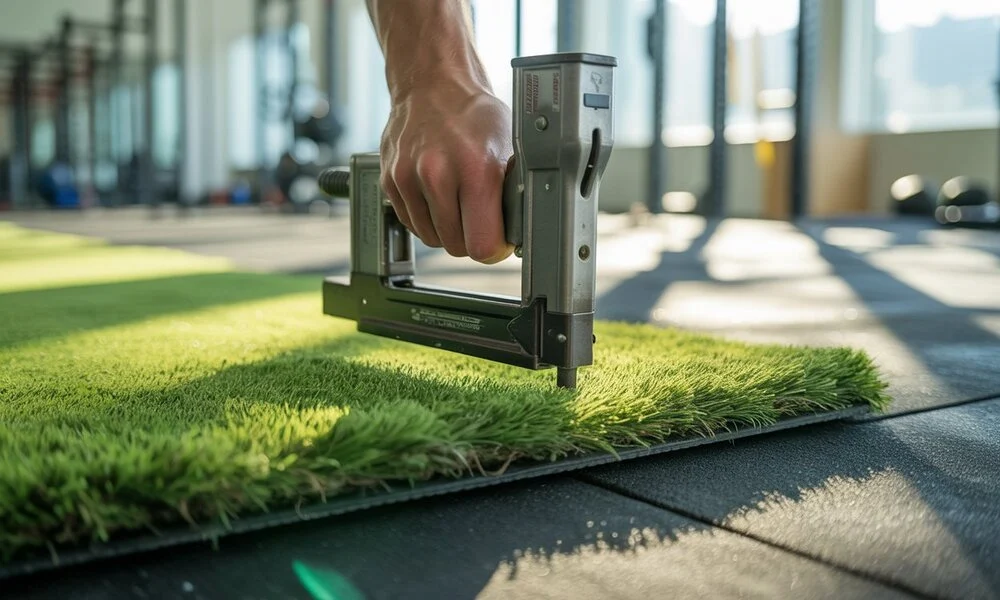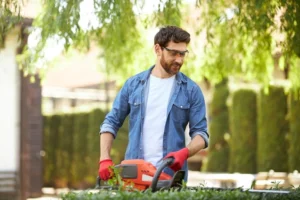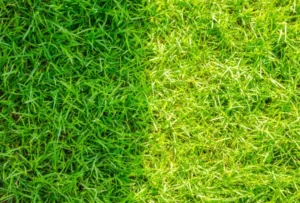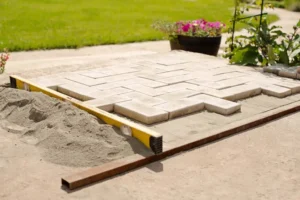Can I staple down my gym turf? Yes, you can if the conditions are right. Using turf grass staples or stakes for artificial grass is a common method to secure turf, especially over plywood or wooden subfloors. In gym settings, proper installation is very important. It helps keep the turf in place during intense workouts, heavy equipment use, and constant foot traffic. When gym turf is not secured correctly, it can lead to safety hazards, wear out faster, and look uneven or wrinkled. So whether you’re using staples or stakes, making sure your turf stays firmly in place is key for safety, durability, and a clean, professional appearance.
Understanding The Importance Of Securing Artificial Turf

Securing artificial turf in gym environments is not just about appearance it’s about safety, performance, and longevity. Without proper anchoring, turf can shift under pressure, posing serious risks during workouts.
Safety During Workouts
Loose turf can lead to slips or tripping hazards. During high-impact exercises, like sprinting or weightlifting, a firm and steady surface is crucial. Using artificial turf nails and turf staples helps keep the turf locked in place, preventing injuries.
Withstanding Equipment Weight
Gym turf endures constant pressure from weights, sleds, and machines. If it’s not secured properly, the turf can stretch or tear over time. Turf staples provide extra grip in areas exposed to heavy loads, helping maintain a smooth and flat surface.
Handling High-Traffic Movement
In busy gyms, foot traffic and dynamic movements create friction that wears down unsecured turf. Artificial turf nails anchor the turf effectively, reducing movement and preserving its structure even in high-use zones.
Improving Turf Lifespan
Well-installed turf lasts longer. By preventing bunching, curling, and shifting, turf staples and nails protect your investment. They ensure the turf stays in top shape, even with daily wear and tear.
You may read about How To Lay Artificial Turf?
Can I Staple Down My Gym Turf?
Yes, you can staple down your gym turf, but only in the right conditions. The method depends on the type of surface you’re installing it on and the kind of use the turf will experience.
Best Surfaces for Stapling
Turf grass staples work well when installing turf over wooden or plywood subfloors. These surfaces allow the staples to penetrate deeply, securing the turf tightly. This is ideal for indoor gyms where a solid wood base provides a firm hold.
When Staples Aren’t Suitable
Stapling is not effective on hard surfaces like concrete or outdoor areas. In these cases, stakes for artificial grass or strong adhesives are better options. Concrete doesn’t allow staples to grip, which can result in loose turf that may shift during exercise.
Indoor vs. Outdoor Use
For indoor gym setups with proper subfloors, using turf grass staples offers a simple and stable solution. But for outdoor or concrete installations, you’ll need to rely on other methods like stakes for artificial grass or specialized turf glue to ensure the turf stays in place under high-traffic use and equipment pressure. If you want turf installation services in San Jose you can contact us.
What Makes Spiral Nails Different From Staples?

When anchoring gym turf, both spiral nails and staples are used, but they serve different purposes depending on the surface and environment. The main difference lies in their shape, installation method, and the type of base they’re best suited for.
Spiral Nails for Stronger Hold on Tough Surfaces
Spiral nails are twisted in design, which gives them better grip and staying power especially when driven into dense materials. They’re often used in gym setups over rubber or concrete bases, where staples can’t penetrate. With the help of adhesive, spiral nails create a strong bond between the turf and hard subfloors, preventing movement caused by friction or heavy equipment.
When Are Turf Staples a Better Fit?
Turf grass staples are U-shaped and best used on wooden or plywood subfloors. They’re quicker to install and sit flush with the turf, which helps reduce visibility. Staples work well for temporary setups or in areas where turf may need to be adjusted or replaced more often.
Pros and Cons of Spiral Nails vs. Turf Staples
Spiral Nails
Pros:
- Strong grip in hard or rubber surfaces
- Excellent long-term hold when used with adhesive
- Better suited for permanent installations
Cons:
- Slower to install
- More visible on turf surface
- Requires pre-drilling or adhesive for best results
Turf Grass Staples
Pros:
- Easy and quick to install
- Low visibility once installed
- Great for indoor use on wood subfloors
Cons:
- Weak hold on concrete or rubber
- May shift under heavy use if not properly spaced
- Less durable for long-term outdoor or commercial setups
Common Mistakes and How to Avoid Them
Installing gym turf may seem simple, but even small mistakes can affect its safety, appearance, and durability. Knowing what to avoid and how to fix it ensures a professional finish that lasts.
Using the Wrong Type of Fastener
One of the most common errors is using the wrong fastener for the surface. For example, using artificial turf nails on plywood might work, but on concrete or rubber, they won’t hold properly.
Fix: Always choose fasteners based on your subfloor. Use turf grass staples for plywood and artificial turf nails with adhesive for rubber or concrete surfaces.
Inadequate Spacing of Staples
If staples are placed too far apart, the turf can lift, bubble, or shift during workouts, especially in high-traffic areas.
Fix: Place staples every 4–6 inches along the edges and every 12 inches throughout the center for strong, even support.
Skipping Adhesive Where Needed
Some installers skip glue on hard surfaces, thinking nails or staples alone will do the job. Without adhesive, turf on concrete or rubber can peel up or slide.
Fix: Always use adhesive with artificial turf nails on smooth or hard surfaces. This ensures a tight bond and longer-lasting results.
Not Securing Edges or Seams
Edges and seams are weak points. If not secured properly, they can curl up, creating tripping hazards and a worn-out look.
Fix: Use extra artificial turf nails or turf staples at all seams and around edges. Apply adhesive underneath for added grip and finish with turf tape if needed.
Conclusion
Yes, you can staple down your gym turf, but the right method depends on your surface type and how the turf will be used. Turf grass staples work well on plywood subfloors, while artificial turf nails with adhesive are better for rubber or concrete bases. Choosing the right fasteners and installation technique ensures your turf stays in place, performs well, and lasts longer especially under heavy gym use. Proper turf securing isn’t just about looks it’s about safety, performance, and long-term durability. For expert guidance and professional installation, contact Lakota Design Group today and let us bring your gym turf project to life with precision and care.
FAQs
What Type Of Staples Should I Use For Gym Turf?
Use turf grass staples if you’re installing turf over plywood or wooden subfloors. They are U-shaped and designed to hold turf securely in place.
How Far Apart Should Turf Staples Be Placed?
Place turf grass staples every 4–6 inches along the edges and seams, and 12 inches apart in the center area for strong and even hold.
Can I Use Artificial Turf Nails Instead Of Staples?
Yes, artificial turf nails are a great option, especially on harder surfaces or when used with adhesive. They provide deeper penetration and better grip.
Do I Need Adhesive If I’m Using Staples For Gym Turf?
If you’re stapling into plywood, adhesive isn’t always necessary. But for rubber or smooth subfloors, use adhesive along with artificial turf nails for extra hold.





